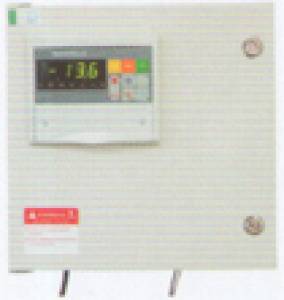Description
Microprocessor Controllers: The Brains of Your Embedded Systems
Microprocessor controllers (often shortened to microcontrollers or MCUs) are powerful, compact integrated circuits (ICs) that serve as the central processing unit (CPU) for embedded systems. Unlike general-purpose microprocessors found in desktop computers, microcontrollers are designed for specific tasks and are optimized for low power consumption, small size, and cost-effectiveness. They integrate a CPU core with memory (RAM and ROM/Flash), peripherals, and input/output (I/O) interfaces, all on a single chip. This all-in-one design makes them ideal for a vast array of applications.
Key Features & Benefits:
- Integrated Functionality: Microcontrollers combine a CPU, memory, and peripherals on a single chip, reducing system complexity, size, and cost. This integration simplifies design, reduces board space, and minimizes power consumption.
- Low Power Consumption: Designed for battery-powered or energy-constrained applications, many MCUs boast exceptionally low power consumption, extending battery life and minimizing heat generation.
- Real-time Capabilities: Many microcontrollers offer real-time processing capabilities, ensuring timely responses to external events. This is crucial for applications requiring precise timing and control.
- Extensive Peripherals: Modern microcontrollers incorporate a wide range of integrated peripherals, including:
- Analog-to-digital converters (ADCs): Convert analog signals (like temperature or voltage) into digital data for processing.
- Digital-to-analog converters (DACs): Convert digital data into analog signals for controlling external devices.
- Timers/Counters: Provide precise timing and counting functions for various control applications.
- Serial Communication Interfaces (e.g., UART, SPI, I2C, USB): Enable communication with other devices and systems.
- PWM (Pulse Width Modulation): Used for motor control and other applications requiring variable output signals.
- General Purpose Input/Output (GPIO): Allow interaction with switches, sensors, LEDs, and other external devices.
- Programmability: Microcontrollers are programmable, allowing customization for specific applications. They typically use C/C++ or assembly language for programming. Many manufacturers provide comprehensive software development kits (SDKs) and tools to simplify the development process.
- Cost-Effective: The integrated nature of microcontrollers and their high production volumes make them a cost-effective solution for a wide range of embedded applications.
Applications:
Microcontrollers are found in countless applications, including:
- Automotive: Engine control, anti-lock braking systems (ABS), airbags, and infotainment systems.
- Industrial Automation: Process control, robotics, programmable logic controllers (PLCs).
- Consumer Electronics: Smartphones, appliances, remote controls, and wearables.
- Medical Devices: Implantable devices, monitoring equipment, and diagnostic tools.
- IoT (Internet of Things): Smart sensors, actuators, and gateways for connected devices.
Choosing the Right Microcontroller:
Selecting the appropriate microcontroller depends on the specific application requirements, including:
- Processing power: The required computational capabilities.
- Memory: The amount of RAM and Flash memory needed.
- Peripherals: The specific interfaces and functions required.
- Power consumption: The acceptable power draw.
- Cost: The budget constraints.
Numerous microcontroller families are available from various manufacturers, each with its own strengths and weaknesses. Careful consideration of these factors is essential for successful project implementation.
This description provides a general overview. Specific features and capabilities will vary depending on the manufacturer and model of the microcontroller. Consult the manufacturer's datasheet for detailed information on a specific device.
